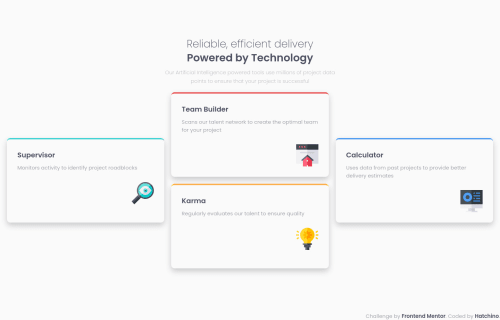Responsive card section CSS/HTML

Solution retrospective
I'm currently stuck on a challenge, in the meantime I tried this one which is simpler. Feel free to leave any suggustions !
Please log in to post a comment
Log in with GitHubCommunity feedback
- Account deleted
Hey there! 👋 Here are some suggestions to help improve your code:
-
The Main Element should only wrap the card components. Since that is your main content.
-
The introductory text should be wrapped in a Header Element.
-
The “Reliable, efficient delivery Powered by Technology” is one single heading so the entire thing should be wrapped in a single <h1> Heading along with a Span Element.
-
The Article Element is not the best choice for wrapping these card components. In order to use the Article Element the components need to be able to make sense on its own and be independently distributable (can be used in on another site). These card components cannot do neither. Instead, you want to wrap each individual testimonial component in a Div and give them a class.
-
Add a third layout to make the transition from mobile 📱 -> desktop 🖥 views smoother.
If you have any questions or need further clarification, let me know.
Happy Coding! 👻🎃
Marked as helpful -
- @Mohammedabbas7
hello, nice solution. I just wondering why you used internal CSS instead of external CSS.
Join our Discord community
Join thousands of Frontend Mentor community members taking the challenges, sharing resources, helping each other, and chatting about all things front-end!
Join our Discord